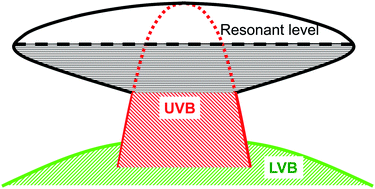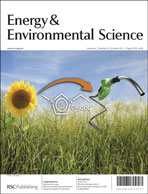Combining alloy scattering of phonons and resonant electronic levels to reach a high thermoelectric figure of merit in PbTeSe and PbTeS alloys†
Abstract
The effect of the resonant impurity Tl, known to produce a high thermoelectric figure of merit in PbTe through a distortion of the density of states (DOS), is explored here in p-type PbTe1−xSx and PbTe1−ySey alloys with direct substitution of Tl for Pb, with the goal of combining its effect with a reduction of the thermal conductivity by alloy scattering. In PbTe1−xSx, the high DOS of PbTe:Tl (x = 0) is maintained up to x = 0.08, whereas the samples' mobility surprisingly increases monotonically with x. An optimal composition is found to reach zT = 1.6 at x = 0.08, using double-doping with both Tl and Na. The DOS of all PbTe1−ySey alloys decreases with y > 0. KKR-CPA electronic structure calculations were performed to enlighten the experimental trends in transport properties: thallium triggers the formation of free-electron-like excess DOS near Fermi level by coupling a Tl 6s-level to the Te p-levels. We ascribe the loss of resonant behavior to a change in overlap between these two levels due to the decrease of the lattice constant with x and y.

- This article is part of the themed collection: Thermoelectrics

 Please wait while we load your content...
Please wait while we load your content...